Search Engine Optimization (SEO) is a practice that is related to optimizing websites to improve their visibility in search engine results pages (SERPs).
This section will provide a brief overview of SEO and its importance for businesses with websites.
There are more than 5.16 billion internet users worldwide, and businesses have an online presence to stay competitive. However, having a website alone is not enough to attract potential customers.
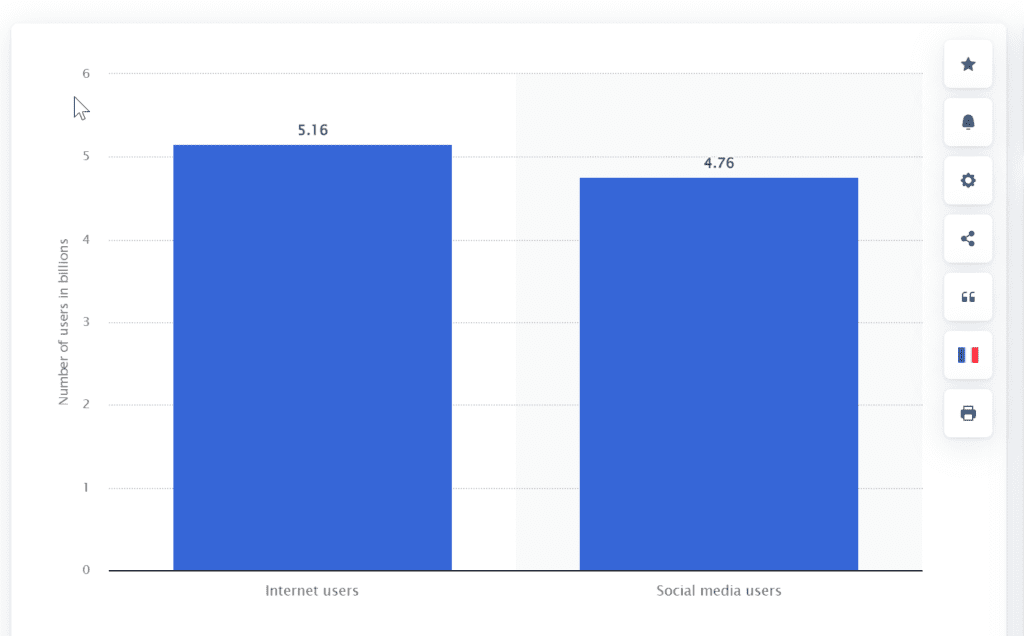
This section will explain to you why having a great SEO strategy is crucial for businesses to rank higher position in search engine results and attract more organic traffics.
This guide will cover various aspects of SEO, from on-page optimization to technical SEO and analytics.
It will provide readers with a comprehensive understanding of how to boost their website’s visibility and improve their ranking in search results.
What is SEO?
Search Engine Optimization (also known as SEO) is the practice of optimizing webpage content for search engines to get a higher ranking on the SERPs pages.
Search engines like Google use so many factors to measure the values of content to provide the best results for users.
Google uses users’ search queries (also known as search intent) to measure the page values throw their algorithms to bring the results on SERPs, and make the ranking position decision.
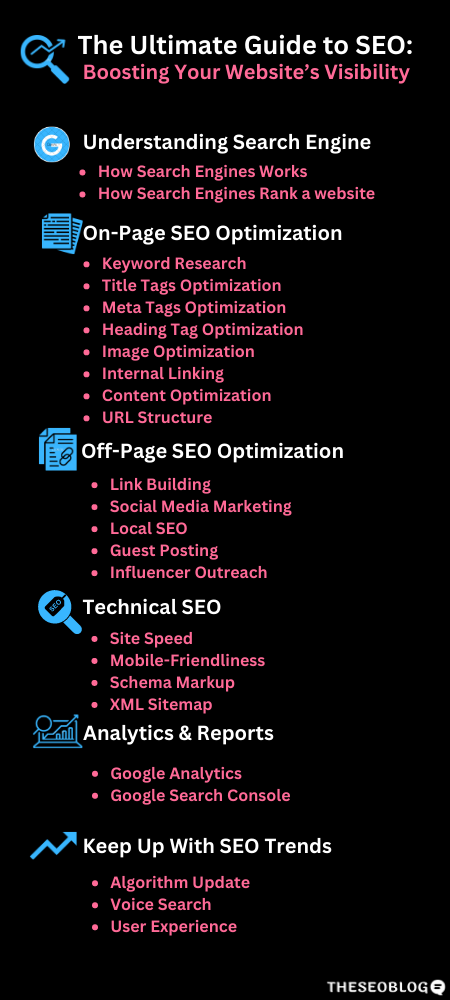
Understanding Search Engines
In this section, you’ll get an understanding of search engines including how search engines work and how they rank a website.
which will give you an idea for your next search engine optimization.
1. How Search Engine Work?
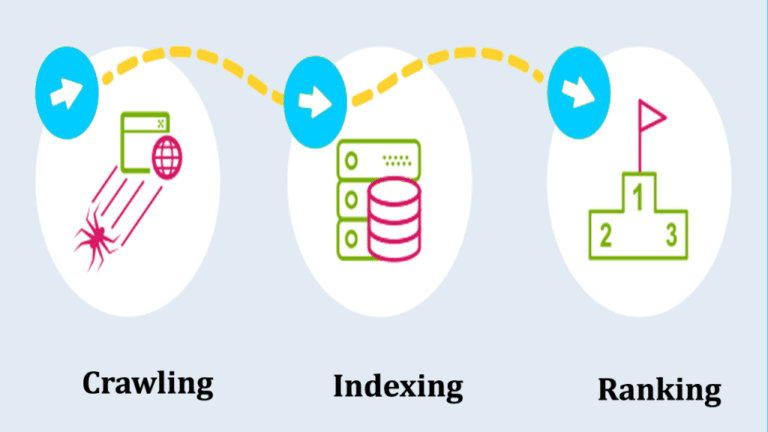
Search engines like Google use complex algorithms to crawl, index, and rank websites.
Search engine works by crawling billions of webpage throw their own crawler, those crawlers are referred to as search crawler bots or spiders.
The web crawlers bots or spiders crawling a webpages then send the data to index, a search engine also use the following links found on the crawled pages to discover new pages for indexing.
2. How Search Engine Rank Website
After search engines index the webpages, they use their complex algorithm to determine which webpages are more valuable to ranking higher on the SERPs.
The search algorithm will check the quality of your content such as how well your content is including search engine optimization and site authority.
Search engines like Google use more than 200 ranking factors to determine the best results for their users, the search algorithm will use the user search intent to determine the best results to show on the SERPs page.
Google is the most popular search engine, with over 92% of the search engine market share. However, other search engines like Bing and Yahoo also have significant user bases.
On-Page Optimization
You may be wondering what is on-page optimization?
On-Page optimization is a practice of doing search engine optimization on your webpage which included various aspects.
In this section, you’ll get full details on the on-page SEO optimization for your webpage to get a better SEO for the search engines that will impact your search ranking on the SERPs.
1. Keyword Research
Keyword research is the most important part of content creation by doing keyword research you’ll get ideas on how to create strong SEO content for your website to get a higher ranking on the search engines.
To get started with keyword research you need to have a keyword research tool to help you find the best keywords for your new content creation.
By using a keyword research tool it will show you all the data involved in that specific keyword such as the number of search volume, keyword difficulty, CPC, and much more.
In the below section, I will share with you the most popular and useful keyword research tools that you can use for your keyword research task which will include free and paid versions.
- Google Keyword Planner – this tool is a free version tool powered by Google itself, you can use this keyword tool to find the keyword data such as the number of search volume, CPC, and more.
- KWFinder – this keyword tool premium keyword tool that provides more accurate keyword data that involved your target keyword, if you prefer to get serious with the SEO keywords you can use this keyword tool because it can help you a lot.
Bonus:
Apart from doing simple ways of keyword research, there are also advanced keyword tips you have to know, by following these keyword research methods you’ll get more likely to rank higher on Google and other search engines.
The tip I will share with you today is to discover and research another long-tail keyword for optimizing your content to make it more likely visible on the search results.
To find long-tail keywords on the original target keyword by using Google, to get started you need to type your target keyword and search on Google then I want you to scroll and find out the “People also ask” section.
For example, my target keyword is “related keyword” then enter it on Google search then I can see that Google shows me the long-tail keyword in the People also Ask section.
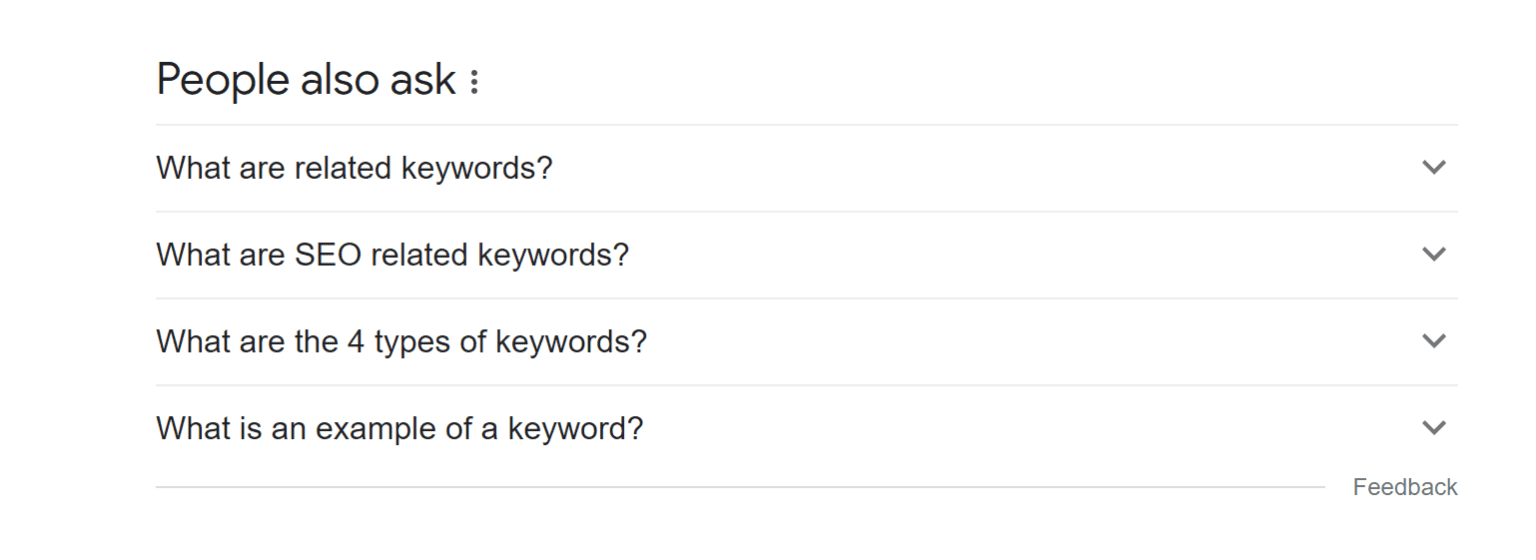
You can also find more long tail keywords from Google search scroll all the way down the end of the page, and you will keyword like this:
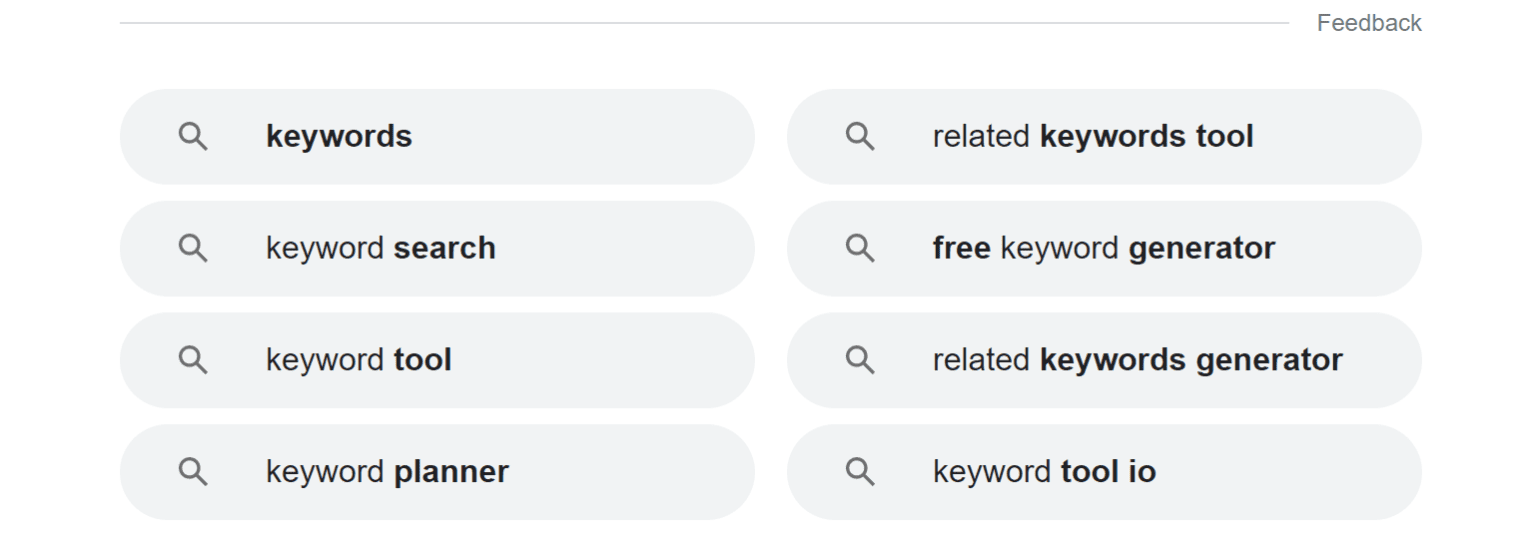
Try adding all of these long tail keywords to your new content and make it thorough it will help your content get better SEO for Google to rank yours.
2. Title Tag Optimization
Title tag is just one of the on-page elements when we talk about optimizing a page or content.
Optimize title tag itself alone won’t likely lead to many ranking changes, However using it in context with other on-page elements can impact your search ranking changes.
In this section you’ll get the overview on how to optimize your title tags to power your content SEO.
What is Title tags? – the title tags is an HTML tag that show on the head of section of any webpage. It provides an initial cue to the topical subject of the page it is on.
Here are the things you need to focus on when optimizing your title tags:
- Searcher Intent keyword use – Make sure to optimize your title tags for the right users search intent by including the keyword with your title tag.
- Unique Tags – Duplicate title tags won’t useful for searchers and search engine, make sure create a unique title for your content.
- Use Call to Action in SERP – You need that title tags will show on the search result, so you need to make more attractive for users to get more clicks, when you more click your ranking position will change and go higher, I will improve your Click Trow Rate (CTR).
- Use Content Title Generator – If you’re not really good at creating a catchy content headline I high recommend you to use content headline generator like SEMrush.
3. Meta Description
Google use meta descriptions tag to show on the snippet in the search results, A meta description tag generally informs users with the short, relevant summary of what a content is about.
The meta description on the search results will look like this:
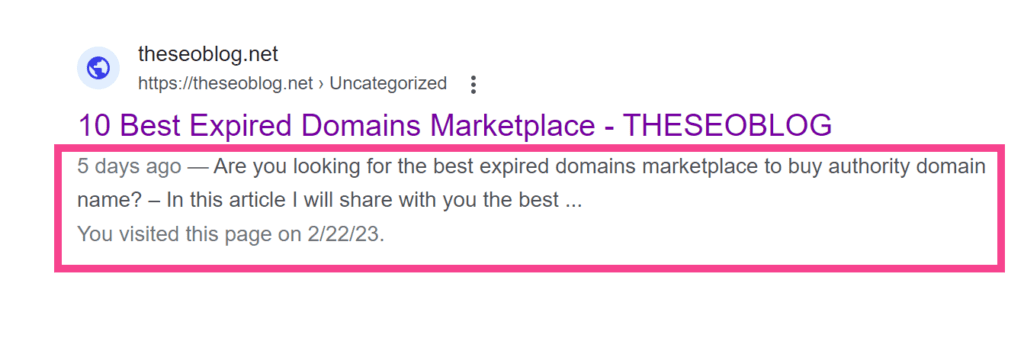
How to optimize your meta description? – Here are some tips for meta description optimization you need to focus on when you optimize it.
- Create Unique Meta Description – Make sure to create a unique meta description with a short, relevant summary of your content.
Include relevant information – Add the most relevant information about your content into the short description.
Here is an example of creating a great meta description:
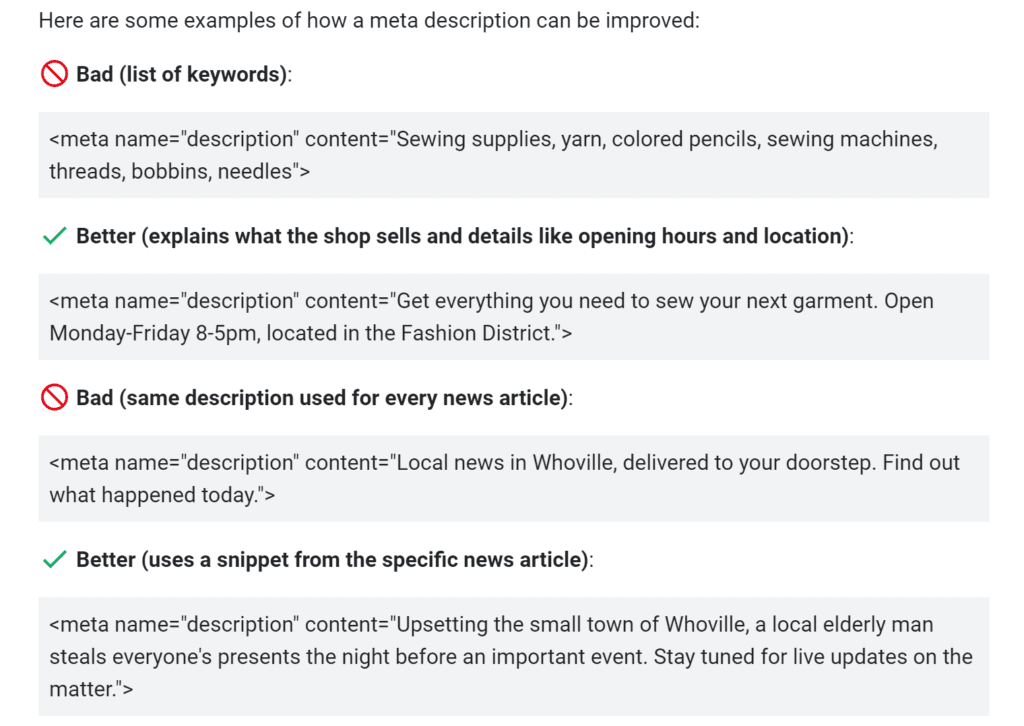
Example in HTML code:
<meta name="description" conten="Search Engine Optimization (SEO) is practice of optimizing a webpage or content to higher ranking on search result (SERPs).">
But the example meta description above is written in HTML code, so how you can optimize your meta description if you’re not a web developer?
Don’t worry if you’re using WordPress to build your website there is an option for you can change your meta description by installing the SEO Plugin on your WordPress site like Rank Math or Yoast.
The plugin will allow you to re-optimize your content meta description super easily. The plugin will allow you to edit your meta description and will look like this:
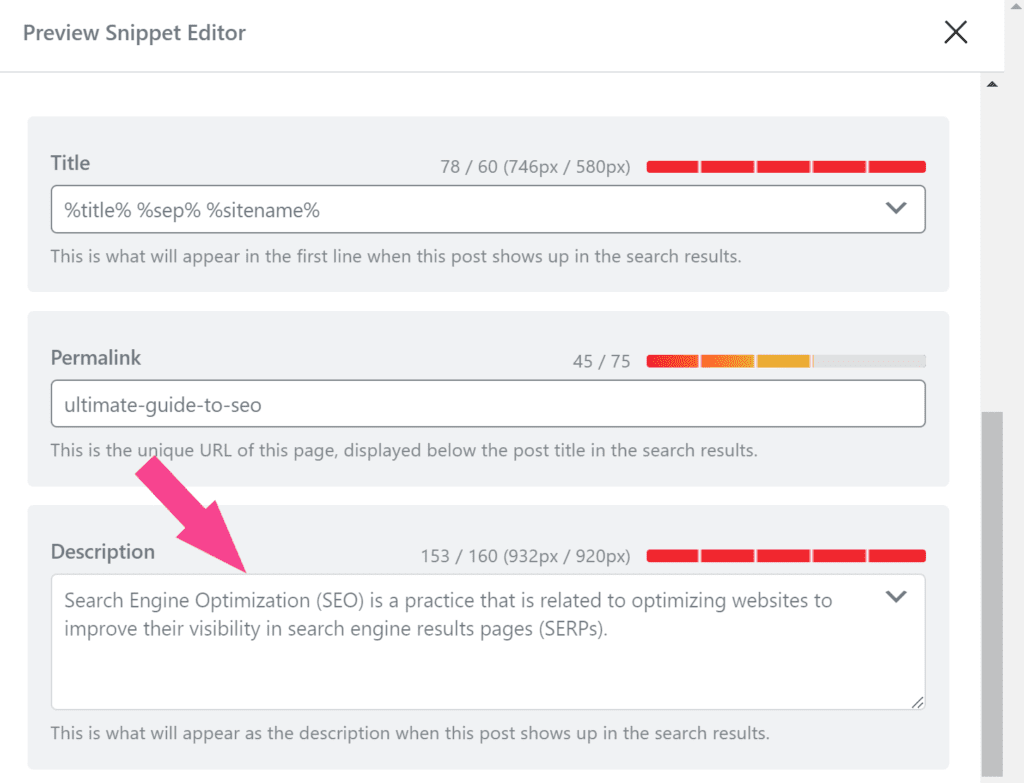
The thing you have to do is just create a great meta description and paste it inside the description box, other than that the plugin will do the rest of the things for you.
4. Heading Tags Optimization
Heading tags is another important of on-page elements to focusing on when we optimize a webpage or content. You can see the heading tags on HTML in H1, H2, H3, H5…
Optimize your heading tags is not to difficult, what you have to do create a great heading that includes your target keyword or long-tail keyword to boost your content SEO friendly.
Here the real example in HTML coding.
<h1>How to Optimize Your Heading Tags</h1>
<h2>How to Optimize Your Sub Heading Tags</h2>
To give great heading tags optimization for the search engines you need to add the most relevant target keyword in those heading tags you ever made.
5. Image Optimization
Adding images to your webpage is help the website look more professional and attractive, but you may know that images on your page or content can help your search engine optimization.
It is also a great strategy to have an image on your page because it helps improve your website user experience (UX) and keep your visitors spending a longer time on your content.
The long time period, the visitors spend on your page throw search engine search results it will boost your time on site – It helps search engines consider that your site provides high-quality information content.
Mean your website provide good user experience then search engine algorithm may switch your ranking position to go higher.
Here are the things you need to focus on when optimizing the image for our website:
- Choose the Right Image Format
- Compress Image
- Create Unique Image
- Customize Image file name
- Write SEO friendly Image Alt Text
- Make your image Mobile friendly
Bonus:
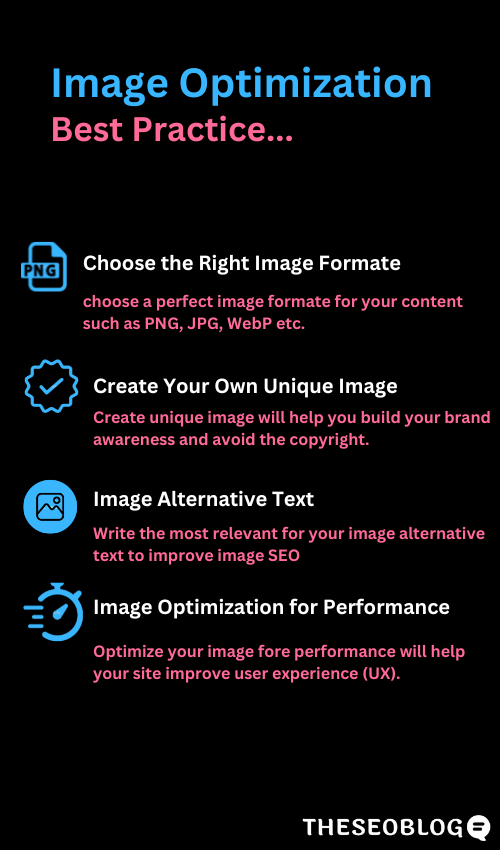
So on above lists is the key concepts of image optimization, in image optimization bonus – I want to make sure you optimize image the right way.
The most important factor on image optimization is to make sure the image alternative text is relevant to your content topic. Other key points:
- Reduce image size for website fast loading.
- Make sure your on-page SEO elements (title tag, meta description, heading etc.) pair with your image.
- Make sure use Image Compression plugin and enable lazy load option to boost your site speed.
6. Internal Link
Internal linking is another on-page optimization element to focus on when optimizing the on-page SEO – if you an SEO beginner and don’t exactly know what is an internal link? here is the quick overview internal linking…
An internal link is the hyperlink from one page to another page on your website, internal helps users and search find more content on your website.
Your users use links to navigate the content on your website they want to find and search engines also use the links to find more pages, they won’t able to find any page if there are no links.
More in-depth explanation to make you get the deep understanding – Search engines use web crawler to crawl the webpage and send crawled data to the index.
Web crawler itself use links to discover new pages and websites this process helps search engines discover more content on the web to index.
Internal linking best practice:
- Make sure to add internal links as many as you can when you create new page or content.
- Make sure linking to the most relevant page or content.
- Internal linking will helps search engines like Google crawl and index you content fast.
- Internal links also help you keep your visitors stay long on your website.
7. Content Optimization
Content is king to drive traffic to any website. However, if you don’t optimize your content you may not drive any traffic to your website throw the content from search engines.
So content optimization is another important factor when we optimize on-page SEO.
In this section, you’ll learn how to optimize your content for SEO that will boost your content visibility on search engine search results.
How to Optimize Content for SEO? – There are factors that you need to focus on when optimizing your content for search engine, below section I’ll list all the factors that every SEO experts use to optimize their content for SEO.
Best content optimization tips:
- Make sure you’re targeting a keyword with traffic potential
- Make sure it aligns with search intent.
- Make sure it covers everything searchers want to know.
- Make sure it’s easy and enticing to read.
- Make sure it has a compelling title tag and description.
Following all of these steps you will get the best content optimization.
However, content optimization alone will not much impact the ranking but it and other on-page elements together will impact the search ranking.
8. URL Structure
URL structure is another critical element to optimize when we optimize on-page SEO.
According to Google stats a URL structure you make it as simple as possible.
Our experience with URL structure we can tells you that you should make it as short as possible and must include your target keyword in your URLs because it helps search engines optimize (SEO).
Example: I started content about “10 Best Expired Domains Marketplace“, so I made my URL should be “https://theseoblog.net/expired-domains-marketplace”.
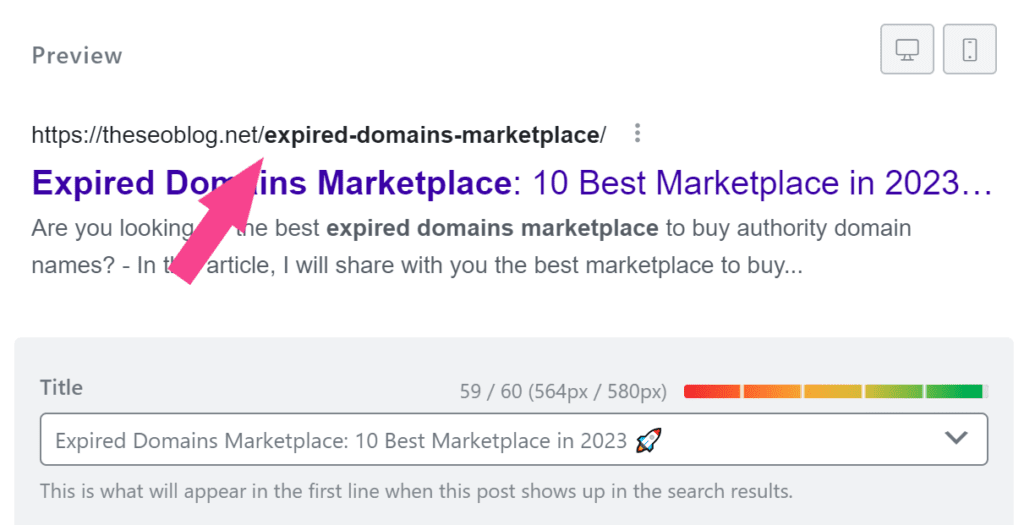
This method are used by all the SEO experts when they optimize URL structure on their site and you also the one should do this too.
Here the URL structure example that Google recommended and not recommended you to use on your URL structure optimization.
Google recommended URL structure: Google also mention that you should readable words rather than long ID and numbers in your URLs link as we had recommended you to use target keyword in your URLs.

Google not recommend URL structure:
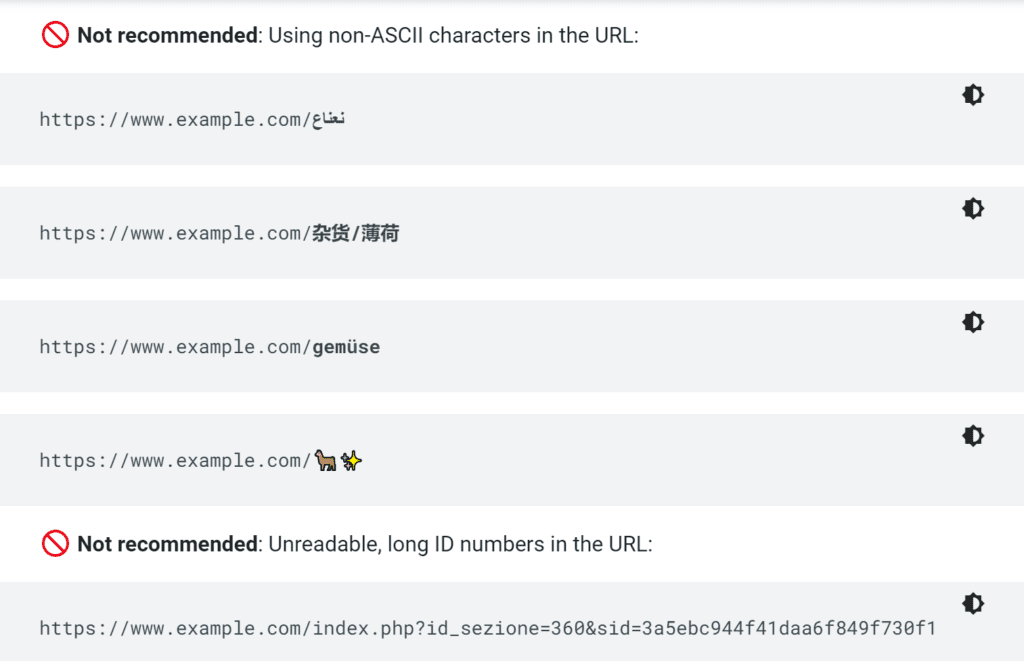
Now you had learned all the on-page optimization elements, let’s move on to the next step of the SEO optimization factors that we should be taking care of, if seriously want to rank our site higher position on SERPs.
Off-Page Optimization
1. Link Building
Link Building is the most important factor in off-page optimization and it is also a time-consuming part to get high-authority backlinks from high-authority sites.
You may wonder what is a backlink? Here is a quick overview of backlinks…
Backlink (also known as an “inbound link”, or “incoming link”) is a hyperlink from one website to another website.
Google and the majority of search engines use backlinks as one of the ranking factors to measure the results for users’ search intent.
Why are Backlinks Important? – Let’s think of an election for a president the more votes they get the chance they will win to be a president.
Backlinks are similar the more backlinks you get from high-authority sites to build your authority.
The more authority your site has the more trusted search engines like Google to rank your site higher position on the SERPs page.
How to get Backlinks? – It is not easy and so difficult to get high-authority backlinks to your website if you know the tricks I will show below but take time-consuming.
I am talking about a white-hat link-building strategy, not a black hat.
Don’t try to get backlinks from irrelevant sites from your niche like buying backlinks from low-quality SEO services because it will not help your site SEO and offense Google guidelines.
Make sure to get backlinks with the most relevant website on your niche.
For example, if you start a website with a “Blogging niche” then you must get backlinks from the sites talking about blogging, SEO, affiliate marketing, etc.
If you get backlinks from these relevant sites, these are powerful backlinks for your site’s search engine optimization and they really impact your search ranking.
Here are the best ways to get high-quality backlinks…
- Guest Blogging
- Broken Links Building
- Outreach
- Testimonials Backlinks
- Editorial backlink
- Link insertion
- Brand mention unlinked
2. Social Media Marketing
Social media marketing is a powerful way for any business to reach customers. people discover, learn, follow, and shop from brands on social media.
If you don’t use social platforms like Facebook, Twitter, LinkedIn, Youtube, Instagram, TikTok, etc.
You’re missing out on the great marketing to reach out to potential customers because there are millions of people are using social media platforms every day to discover new things, connect with friends and family, and also shop from brands throw social media.
What is Social Media Marketing? – Social media marketing is a form of digital marketing to leverage success throw popular social media networks to achieve your marketing goal.
Social media marketing also includes social advertising where you can pay to boost your marketing strategy to appear your business in front of large volumes and huge targeted users.
Social media marketing is a great marketing channel you need to focus on because it gives lots of benefits to your business, sales, and brand awareness.
The Benefits of Social Media Marketing:
- Drive Traffics to Business Website
- Generate Leads and Customers
- Increase Brand Awareness
- Great Relationship
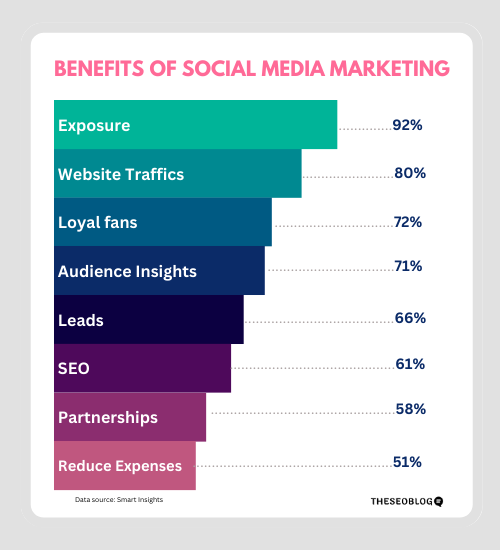
3. Local SEO
Local search engine optimization (SEO) is the strategy to get a business website more likely to be visible on search result pages (SERPs), Local SEO can help a business get more sales, throw user intent if you’re providing local services or products you need to take care of local SEO.
If you search on Google for a keyword related to your business you will see the list of maps appear at the top (also known as the map pack) This can help customers easy to reach a business and buy things.
How Does Local SEO Work? After analyzing the behavior of users throw trillions of searches Google figured out that people looking for certain products or services and want immediate search results from their area.
That’s why Google’s local ranking algorithm takes a proximity factor, meaning that Google takes your location into an account when you search for local keywords. It happens even if users do not include a city name or “near me” in the search.
If you’re at work and want to get a burger delivered then Googling “burger delivery” you’ll see the lists of burgers delivered in your local near your office.
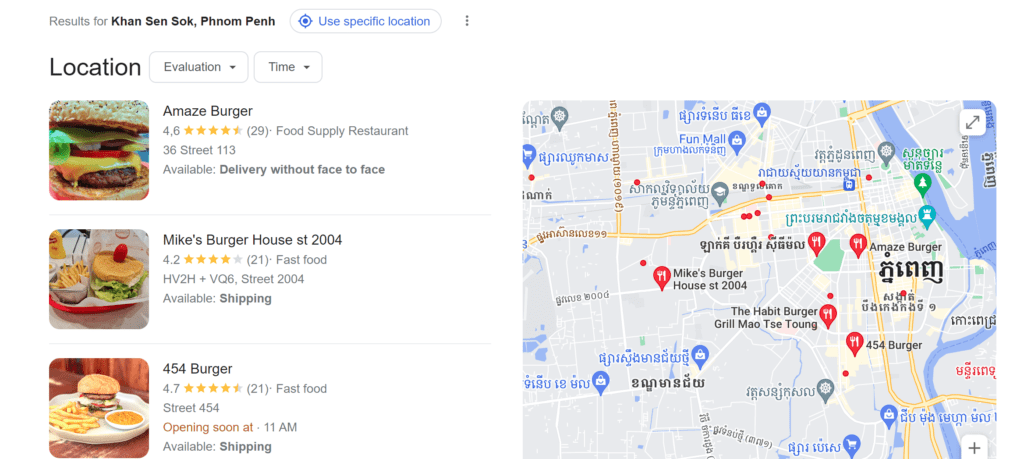
If you try the same search at your home, you will get an entirely different set of results based on the location you live.
Because Google local search algorithm figured out that you want a quick delivery from your area.
4. Guest Post
Guest posting (also known as guest blogging) is a practice of writing content and post on other people sites to get free traffic from a popular website to your website, guest blogging is also a great benefit for mutual drive free traffic and gaining backlinks to your website.
When you get a high amount of backlinks from another website to yours then your site authority will increase and it is really good for your website SEO and boost your page ranking on the SERPs.
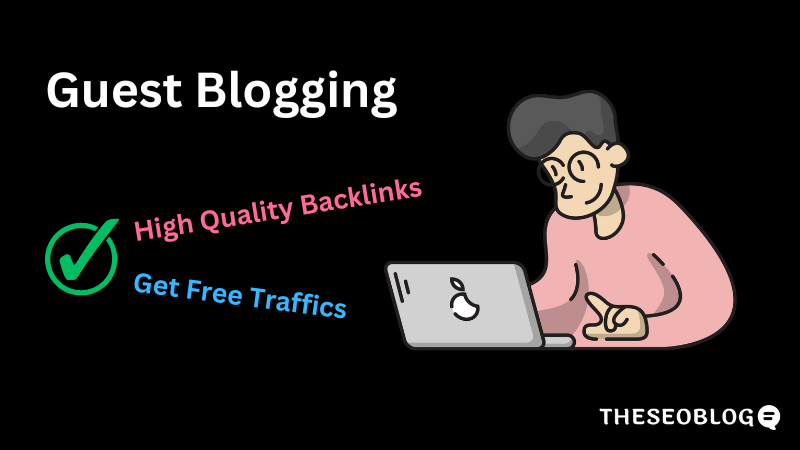
The best strategy to start guest blogging that will work for your SEO and link building is to do guest post with a relevant niche website.
For example, I am starting TheSEOBlog.net my niche SEO if I want to do guest blogging I should looking for the websites that share content about SEO, blogging, affiliate marketing… etc.
Guest blogging is a time-consuming task because you need much time to produce high-quality content to get content published on other people’s websites.
But it is the best strategy to high-quality backlinks to your website to boost your search visibility on SERPs.
If you want to keep your site SEO health great with hat SEO link building, a guest posting is the best link-building strategy you must do even SEO experts also using guest blogging as their long-term link-building strategy.
Most of the SEO beginner thought that buying backlinks is a quick way to rank their website fast on Google. Yes, it work if you buy high-quality link-building service from SEO experts.
But if you bought a low-quality link-building service it will harm your site SEO because the links you got are not natural and irrelevant niche sites.
Search engines like Google do not recommend having those types of links called spammy links.
5. Influencer Marketing
Influencer outreach is a strategy for building relationships with influencers, It involves sending emails or messages to connect to the right influencers on social media.
This strategy benefits relationship development, content promotion, and link building.
In briefs, an influencer outreach strategy comprises methods and techniques you may use to connect with influencers. You can develop this strategy base on your marketing goals:
- Brand awareness
- Leads
- Conversions
- Engagement
- Followers
- Find influencers
- Find their contact details
- Choose a compelling offer
- Create messages
- Send them
- Analyze the results
Technical SEO
1. Site Speed
Site speed is the time user spends to browsing your webpage, the fastest your site loading the better your site user experience.
It is one of the most important factors when it comes to optimizing off-page SEO. A slow-loading website will impact business marketing, sales, and user experience because everyone doesn’t like to wait for slow loading website.
If a website loading slowly you’ll lose lots of customers and revenue. It also impacts your brand awareness and experience.
There are several factors that impact your site speed such as web hosting, image optimization, website code compression, and database optimization.
So how do you know whether you loading fast or slow? – Well there are several tools to can use to metrics your site speed such as Google PageSpeed Insight, Pingdom, and GTMetrix. These tools will show details information about your site speed.
How to check your website speed? First, you need to go to one of the above tools, like Google PageSpeed Insight, and enter your website URL to check the page speed.
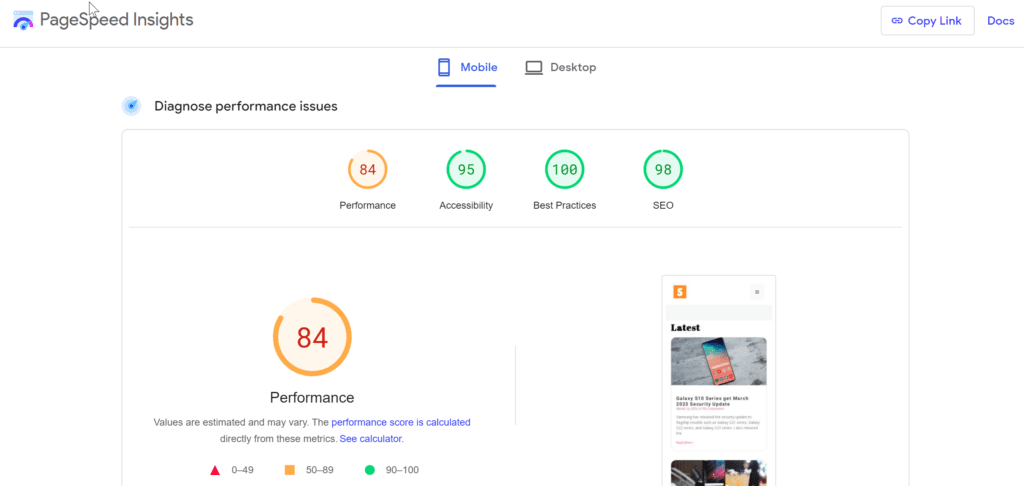
Pro Tips:
Most SEO beginners use home page URLs to check the test site speed but for technical we use the specific page or post URLs to test that webpage loading speed.
How to speed up your website loading time? – There are several ways you can optimize your website speed to boost the loading and make your loading even faster by using a cache plugin (WordPress website), an Image Compression plugin, and a content delivery network (CDN).
If your website builds with WordPress I highly recommend you use these plugins and tools to boost your site speed.
- WP Rocket Pro – Cache Plugin
- Imagify – Image Optimization plugin
- Cloudflare CDN
- Choose Premium WordPress Hosting
2. Mobile Friendliness
Site mobile responsive design is the most important factor because there are 59.72% of mobile internet traffics according to Statista statistics.
It huge amount of internet browsing throw mobile device. So it can be a consideration for you to make your website mobile friendy if you seriously want traffic from the mobile device.

So make sure to make your website fully responsive with any device such as mobile. If you’re using WordPress as your blogging platform, there are tons of WordPress that are available and fully responsive for any device those free and premium themes.
If you don’t know which theme to getting started with, I have some suggestions for the best and the most popular WordPress you can use on your website.
- WP Astra
- Generate Press
- Divi Theme
- Kadence WP
3. Schema Markup
Schema markup is a form of microdata that allows search engines to better understand the content of a webpage.
It is a vocabulary of tags that can be added to the HTML of a webpage to provide additional information about the content on that page.
This can include information about the page’s author, date of publication, reviews, ratings, and much more.
Using Schema markup, website owners can make their content more easily discoverable by search engines, which can lead to better search engine rankings and more traffic to their site.
This is because search engines can more easily understand the context and meaning of the content on a page when Schema markup is used.
Schema markup is particularly useful for websites that have a lot of structured data, such as ecommerce sites, recipe sites, and review sites.
By providing more detailed information about the content on these types of sites, Schema markup can help search engines display richer, more informative search results, which can be particularly useful for attracting potential customers.
How about example?
What human see:
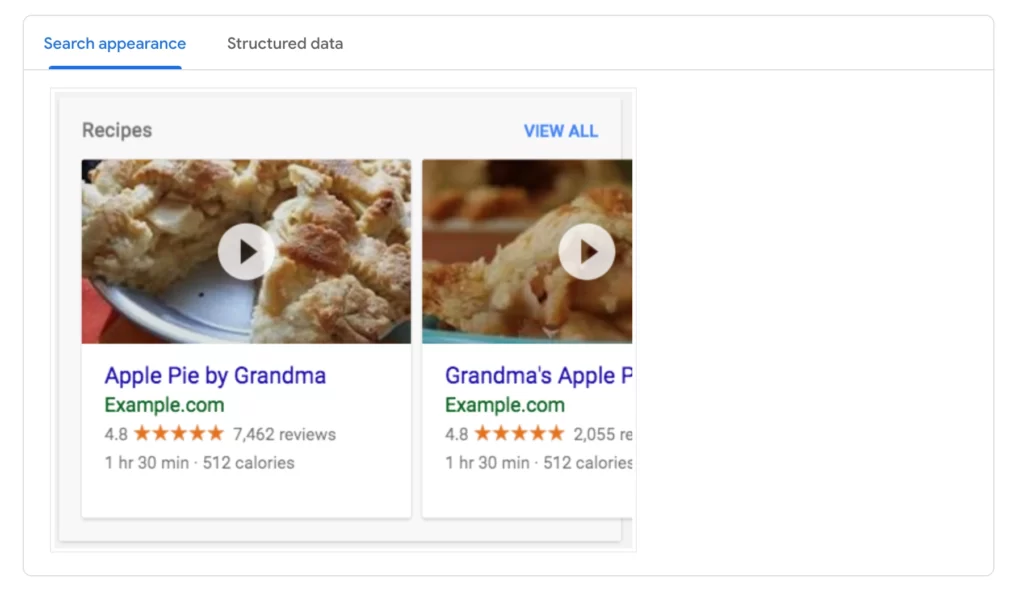
What search engine / web crawler sees:
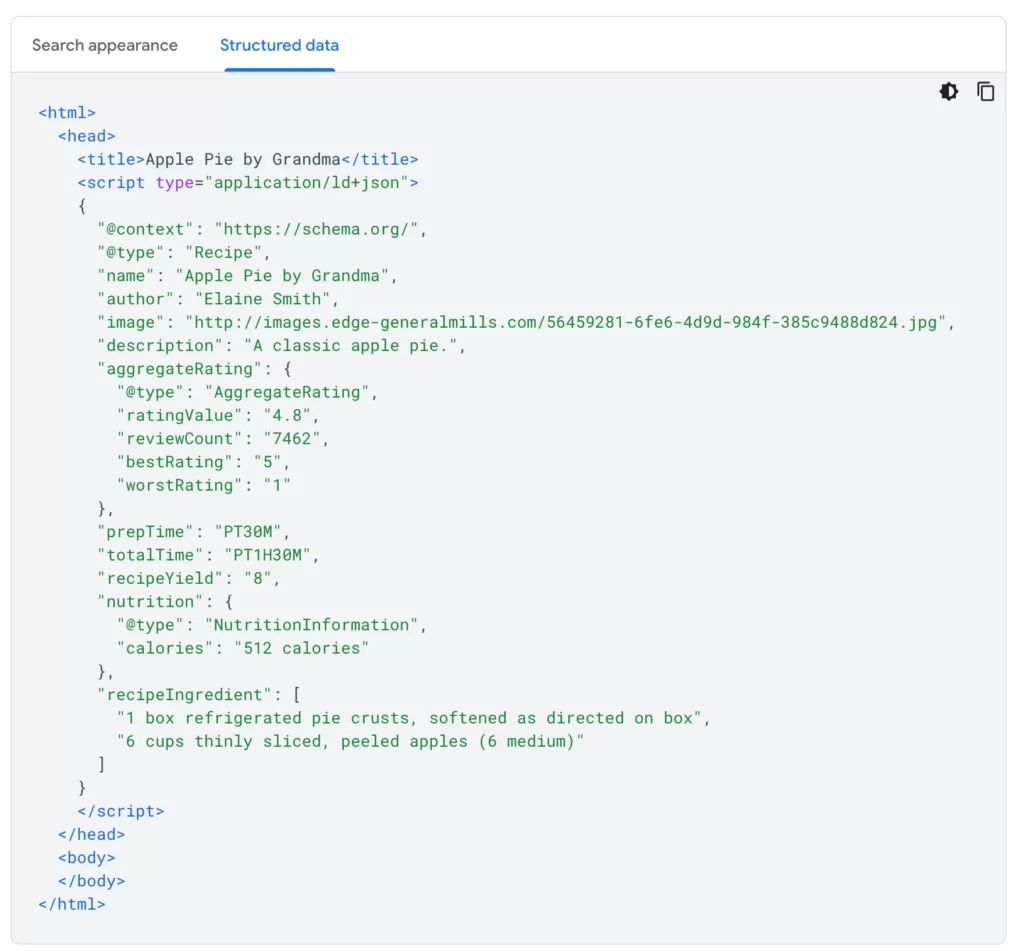
Source: Google Developer.
Why We Need Schem Markup? – Schema markup is important because it helps search engines better understand the content on a webpage.
By providing additional context and meaning to the content, search engines can more accurately interpret the information and display it in a more useful way to users.
Without Schema markup, search engines would have to rely solely on the text on a page to understand the content.
This can be difficult, especially for more complex content such as product listings or reviews, which may contain information about pricing, availability, and other important details.
Schema markup provides a standardized way to convey this information to search engines, making it easier for them to understand and use.
In addition, Schema markup can also help website owners improve their search engine rankings and attract more traffic to their site.
By making it easier for search engines to understand the content on a page, website owners can increase the likelihood that their content will appear in relevant search results, leading to more visibility and potential customers.
4. XML Sitemap
An XML Sitemap is a file that lists the URLs of a website, providing metadata about each URL (like when it was last updated, how often it changes, and its importance relative to other URLs).
This file helps search engines index the site’s content more effectively.
XML sitemap playing an important role in your SEO game, it also gives you a lot of benefits for your website search engine optimization (SEO) and ranking.
Here are the breakdown of XML sitemap benefits:
- Ensures comprehensive crawling and indexing of all site pages.
- Improves search engine visibility and SEO performance.
- Facilitates faster indexing of new or updated content.
- Helps search engines understand site structure and hierarchy.
- Increases discoverability of deeper or isolated pages.
- Provides insights into potential indexing issues.
Share via:

